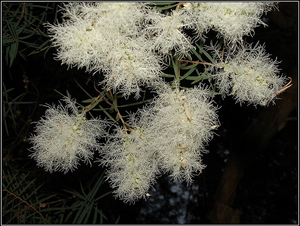Tea Tree Oil and its Effectiveness in Treating Acne Vulgaris
Acne vulgaris is a skin disease that has the capacity to affect more than half of the population at one point or another during their lifetime. Acne vulgaris may be most prevalent during adolescent years and development, however certain strains can persist through adulthood. The clinical features and prevalence of acne vulgaris has gained increased attention in more recent years. Recent studies indicate that traditional antibiotic treatment may not be as effective in treating this disease, thus a growing concern has arisen and essential oils have been targeted as a potential antimicrobial treatment option.
Introduction to Acne Vulgaris
Acne vulgaris, or common acne, involves the pilosebaceous unit. Pilosebaceous units are hair follicles in the skin that are associated with an oil gland (Williams et al. 2012). Generally speaking, acne arises during puberty and resolves prior to adulthood. However, there are some variations or factors that persist long into adulthood.
Seborrhea, comedones, papules and pustules are clinical features that distinguish acne from other diseases (Williams et al. 2012). Seborrhoea is defined as excess grease while comedones are a result of a clogged hair follicle (Williams et al. 2012). Comedones are manifested as either blackheads or white heads and are distinguishable by whether or not they are covered or open. Blackheads are open comedones while white heads are closed. Lastly, papules and pustules are categorized as inflammatory lesions and constitute final clinical features of acne (Williams et al. 2012). Both are distinguished by an elevation of the skin and whether or not they produce pus.
Acne is typically found in parts of the body where there is a high density of pilosebaceous units (Williams et al. 2012). Specific body parts include the face, shoulders, back, neck, arms, and upper chest. The cause of acne can very from one individual to the next and may include, heredity, sweating, diet, and the consumption of certain drugs, and can even be influenced by environmental conditions such as how humid an environment is (Williams et al. 2012).
There are multiple mechanisms by which acne lesions can be formed. Such mechanisms include the release of inflammatory mediators into the skin, changes in sebum production, a modification to the process leading to the formation of comedones, and a colonization of the bacteria species Propionibacterium acnes (Williams et al. 2012). The genome of Propionibacterium acnes was recently sequenced. The genome sequence reveals numerous proteins that assist P. Acnes in colonizing and residing in human skin under a variety of conditions (Bruggemann et al. 2004).
Background Information: Tea Tree Oil
Many essential oils have been found to have antimicrobial and antioxidant properties (Kim et al. 2004). Of these essential oils, tea tree oil may be one of the most studied due to its broad spectrum of known activities (Kim et al. 2004). Tea tree oil comes from Melaleuca alternifolia, a tree species that is native to Australia. Via a steam distillation process, the tea tree oil can be isolated from the leaves, twigs, and branches of M. alternifolia (Lee et al. 2013).
Tea tree oil is mainly comprised of terpene hydrocarbons (Lee et al. 2013). Furthermore, tea tree oil is made up of over 100 components that aid in its antimicrobial and antioxidant capabilities. Some of these components include, monoterpenes, sesquiterpenes, and their alcohol derivatives (Kim et al. 2004).
According to the International Organization for Standardization (ISO) 4730 guidelines, the various components of tea tree oil must be defined and should not exceed certain percentage parameters. For example, the ISO guidelines dictate that the concentration of terpinen-4-ol should exceed 30% while the concentration of 1,8-cineole should not exceed 15% (Lee et al. 2013). However, more than just the components terpinene-4-ol and 1,8-cineole make up tea tree oil. Lee and colleagues (2013) note that the composition of devised tea tree oil formulas have included ϒ-Terpinene, α-Terpinene, ρ-Cymene, α-Pinene, and α-Terpineol.

Section 3
Include some current research in each topic, with at least one figure showing data.
Further Reading
[Sample link] Ebola Hemorrhagic Fever—Centers for Disease Control and Prevention, Special Pathogens Branch
References
Edited by (your name here), a student of Nora Sullivan in BIOL168L (Microbiology) in The Keck Science Department of the Claremont Colleges Spring 2014.
